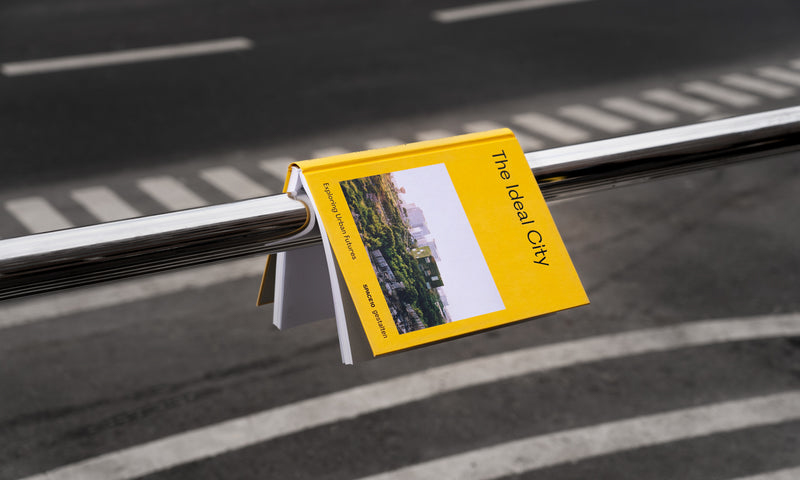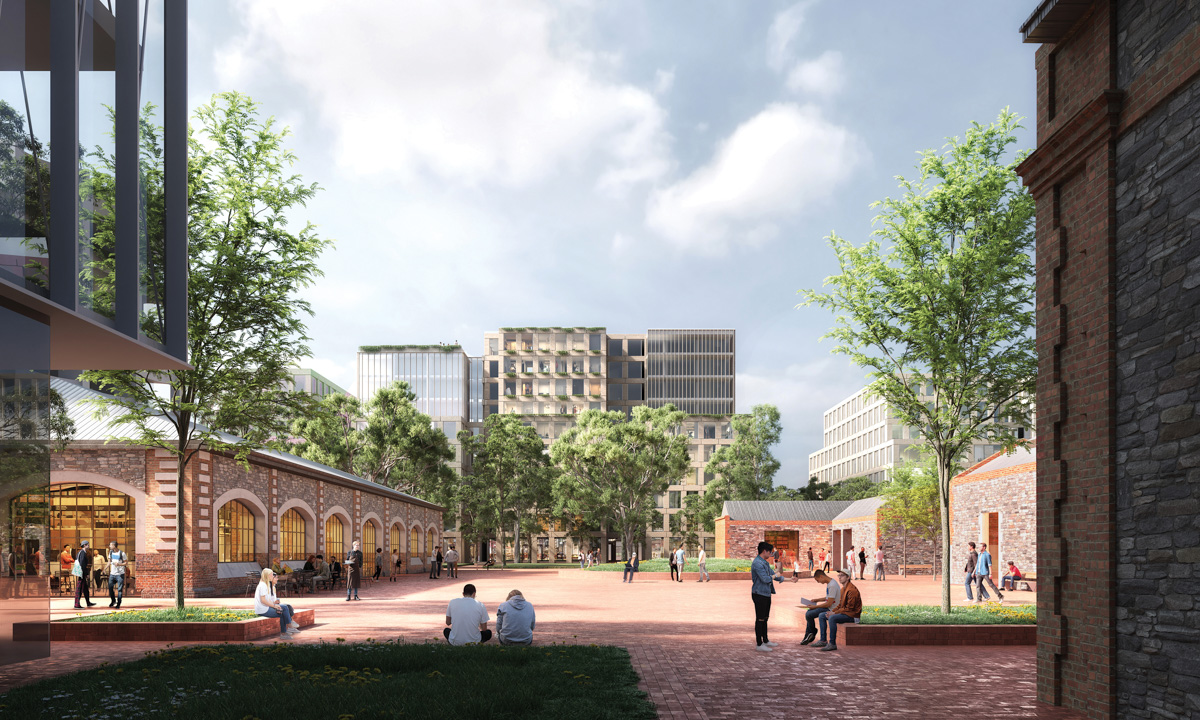The architecture industry is stuck managing social and environmental changes, but it should be using the perspective-shifting nature of the pandemic to create a stronger industry, writes Studio Nine Architects' Andrew Steele.
The key to unlocking our future is here if we want it
Meandering through the streets of Kent Town with a colleague on the way to a meeting, our conversation quickly leads to COVID and how small and medium business are navigating these times. Between split-shifts and a discussion around plans to come back into the studio, our key theme was, it could always be worse.
Andrew Steele is a director of Studio Nine Architects.
This article was produced in collaboration with Studio Nine Architects.
Through all the ups and downs of COVID and the shackles it’s put on us, Adelaide seems to be somewhat insulated from it all. Unlike the economic peaks and troughs experienced along the eastern seaboard, Adelaide plays the long game. Being happy not to ride as high means only having to stumble through the lows. Perhaps there is wisdom in acting like a nanna after all.
Two years into the pandemic, the architecture and design industry is busy. In fact, very busy. But there still exists an opportunity to use this pandemic to reset our trajectory and question what we want for our city.
Sitting as a member on the Residential Infill Committee of the Property Council of Australia for the past year has given me insight into how debilitating stagnation in product innovation can be on an industry. Listening to reports of the crisis in housing affordability and our reliance on traditional methods of construction felt like banging my head against a rendered Hebel wall.
This one-dimensional mindset leaves us open to material shortages and supply chain issues that we’re destined to experience time and time again. That’s not smart, that’s just lazy.
Our industry is stuck in a pattern of change management. What we need from the next generation of industry leaders is an attitude of change leadership.
Housing affordability needs a nationwide approach that is design-led, embedded in technologically smarter solutions in construction, and alternative methods of development and circular procurement. All of this must be underpinned by that oft-thrown-around buzzword — ‘sustainability’. It must be environmentally, technologically, culturally, socially and economically sustainable.
Policymaking can only get you so far if the products created or systems implemented are fundamentally flawed by traditional thinking. An initiative like Nightingale is an affordable housing model that demonstrates a new approach to building procurement – which is great, but what about the building itself?
We need to be smarter with our designs, more generous with our policymaking, and, ultimately, more future-focussed; untethered by politics and personalities, but led by outcomes centred around people and place. Outcomes, whilst appearing design-led from the outside, must be research-led from within. The work by Space 10 is a prime example of this level of deep questioning on what an Ideal City could be.
When deciding on my course preferences for uni, I actually thought I’d be an industrial designer first, then architect second. There was something about designing products that could positively impact people’s lives every day that attracted me to the profession. Architects who specialise in multi-residential projects like apartments and townhouses are (in a way) Industrial Designers. We’re just working at a different scale. We have the scalable opportunity to create lasting value to people’s lives through well-executed design. Looking back, this is also what lured me to working at Studio Nine Architects.
Within Studio Nine, we now break up our design process into three key parts: Curiosity, Insight and Craft. Spending time and acknowledging the importance of curiosity is arguably the most important phase of any project. Without this level of scrutiny and rigour, the chance to unlock something truly innovative is simply impossible.
To this day, I’m unashamedly a fanboy of Dieter Rams. His thinking and approach to design ground me on a daily basis. Arguably his simplest, yet most profound quote still fuels me: “Question everything generally thought to be obvious”.
This needs to be applied to our current methods of construction, manufacture and procurement in large-scale developments.
That is the key to unlocking our own concept of what the Ideal City could be.
Without government funding programs or incentive schemes, the willingness from the private development sector to foot the bill for this level of industry-wide transformation will take generations. So it’s pleasing to hear about the Clean Energy Finance Corporation’s recent $300M Timber Building Program, transforming Australia’s approach to large-scale building construction and taking the first very real step in its commitment to the cause.
Further to this, our recent insight into the MAB and Forum bid that was awarded the Former Brompton Gasworks site could be the catalyst project that showcases what we are capable of. Working alongside a truly integrated approach that partners design and technology with industry experts affords us this unique opportunity to go from place-makers, to city-shapers. That not only brings me unbridled joy, but with it, as sense of stubborn optimism.
Andrew’s design picks
SPACE10

This image: Anne-Sophie Rosenvinge
SPACE10 has teamed up with Gestalten to create a book that gathers world-renowned experts to explore a better urban future for all of humanity. They have called it their ‘book of recipes for how to better design, build, inhabit and share our cities’ – and can be ordered at gestalten.com.
Nightingale Housing

SOHO apartment, Nightingale Bowden. Visualisation by Meche
Principles of co-habitation are implemented in all Nightingale builds – like common laundry facilities, no basement carparking and shared residence workshops.
With an accommodation brief and a design aesthetic that only delivers the necessities, this unlocks a ‘build less, but build better’ outcome making some of their housing solutions truly affordable, without any sacrifice on quality.
Read more about Nightingale Housing here.
Former Brompton Gasworks Site

MAB’S revitalisation of the former Brompton Gasworks site. Visualisation by Forum Studio
Being a part of MAB’s team affords us an opportunity to partner with other design practitioners to really push the boundaries on what multi-residential development could look like now and into the future. A development that has innovation and employment at its heart can positively contribute as a city-wide asset accessible by all.
Read more about MAB’s revitalisation of the former Brompton Gasworks site here.




